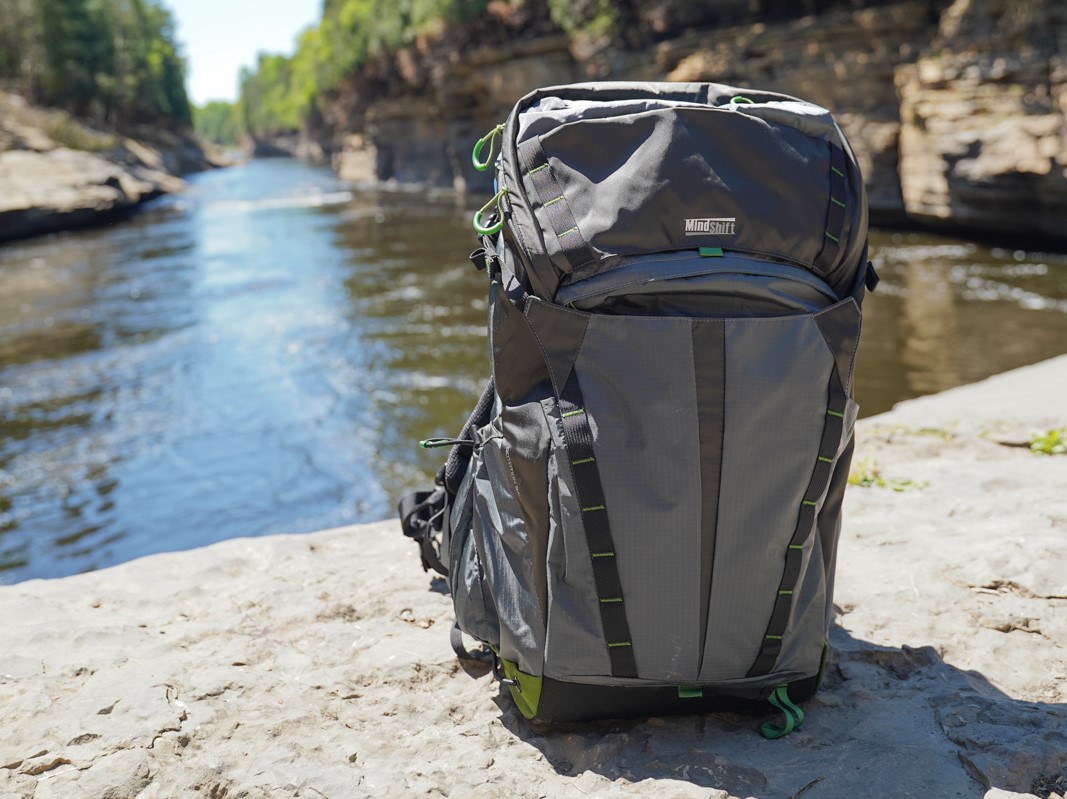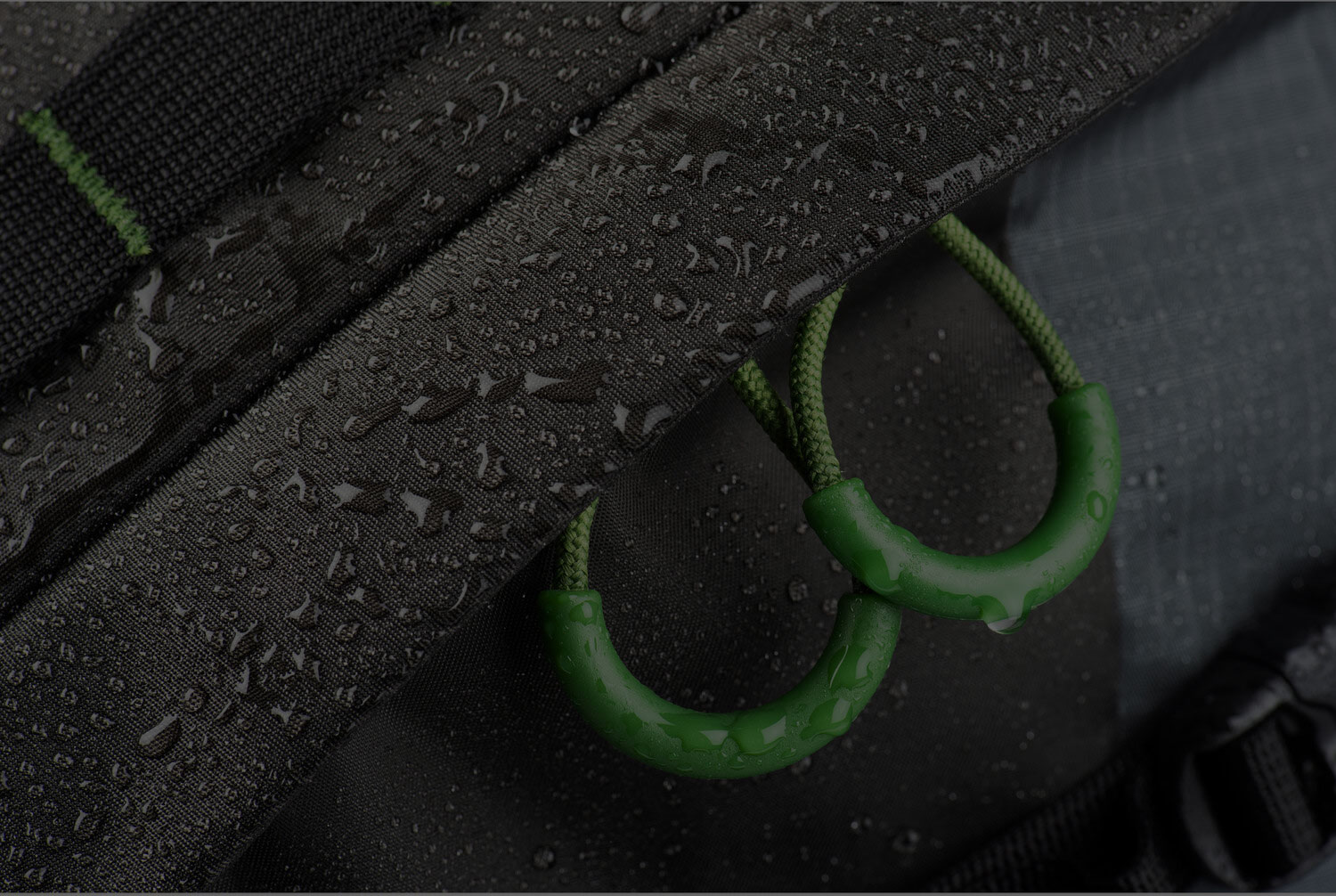The Rotation180 34L backpack is a photography backpack designed for hiking and with a unique way to access photo gear. It is the second version of this backpack designed by Mindshift Gear, a division of Think Tank Photo.
The Rotation180 line comes in three sizes: 22L for small outings, 34L for day hikes (or frugal multi-days outings) and 50L for users needing the largest capacity. What sets these bags apart from any other in the market is how the photographer accesses the camera.
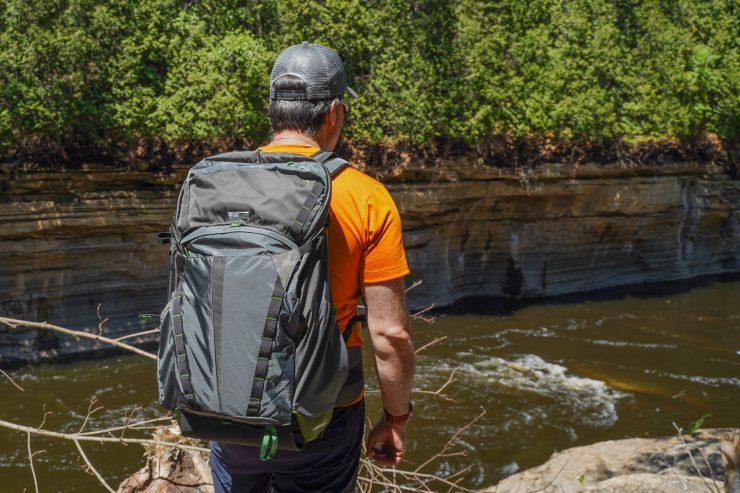
A large number of photo backpacks use some kind of side access. This works decently well but requires that the hip strap be detached, the bag swung to the side, held in place by one hand while the other reaches in. Other bags will offer top, front or back access and usually require that the bag be laid on the ground.
The Rotation180 bags work differently. The bottom part is separate from the rest of the bag and can rotate to the front of the wearer. This padded compartment holds the camera and lenses. The magic is that is can be accessed without taking the bag off. In seconds, this bottom compartment can be rotated towards the front, opened, and the photographer can use its wide opening and stable surface to switch lenses, grab a flash, store the camera, all without breaking stride.
In this article, I take a closer look at the Rotation180 34L backpack.
Physical Description
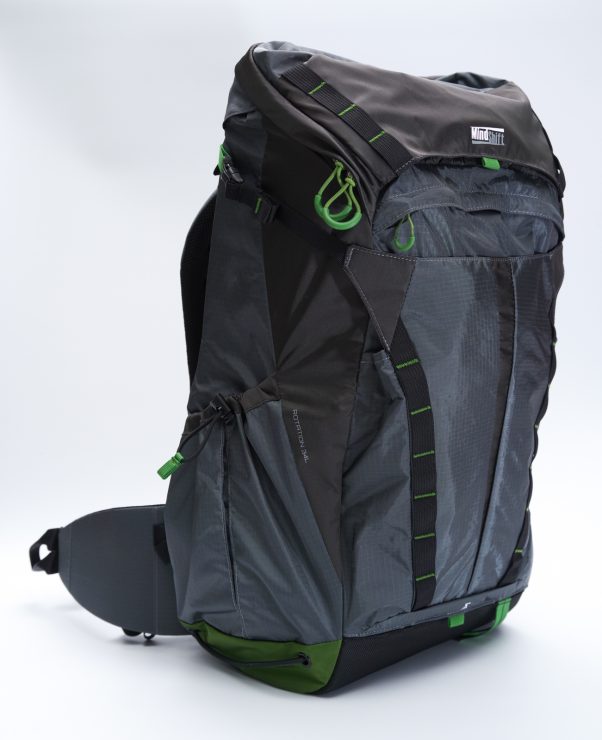
At first glance, the Rotation180 34L looks like many other hiking backpacks. It uses lightweight, sturdy materials, includes daisy chains and other attachment points, wide straps, and solid support. The back panel is particularly stiff but still well ventilated, even though it could have been made even better by using a full trampoline mesh to separate the back panel from the wearer (this is almost unheard-of for camera backpacks, however).
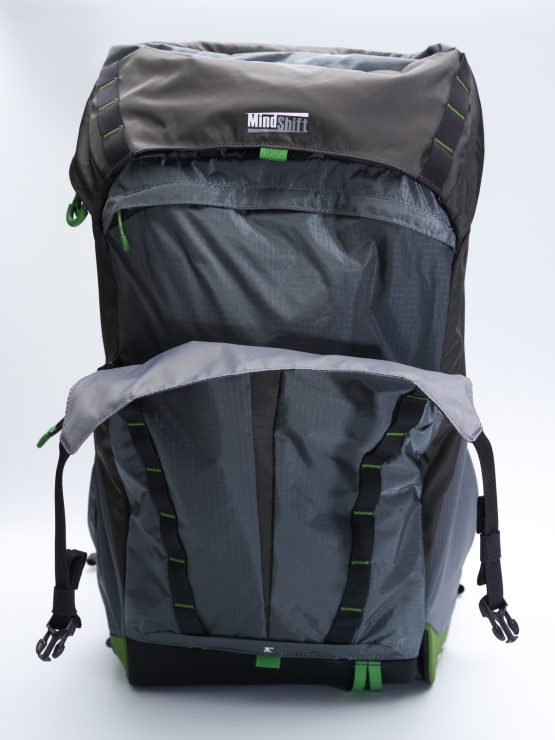
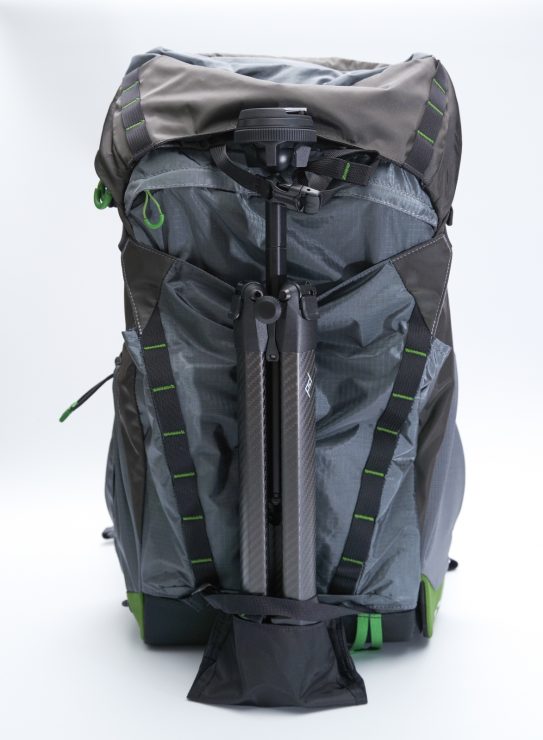
The front includes an open pocket which can extend outwards, good to carry wet clothes or a jacket. Behind that is the pouch for the water bladder, with a hook to support it and a path towards the back for the hose. Hidden at the top and bottom are attachment points for a tripod. A hallmark of many Think Tank / MindShift Gear bags, this system is simple, works well and centers the tripod on the backpack. However, it works better with longer tripods; for shorter travel tripods, it requires that the tripod be partially extended. This makes little sense for a hiking backpack and is one of the very few missed opportunities.
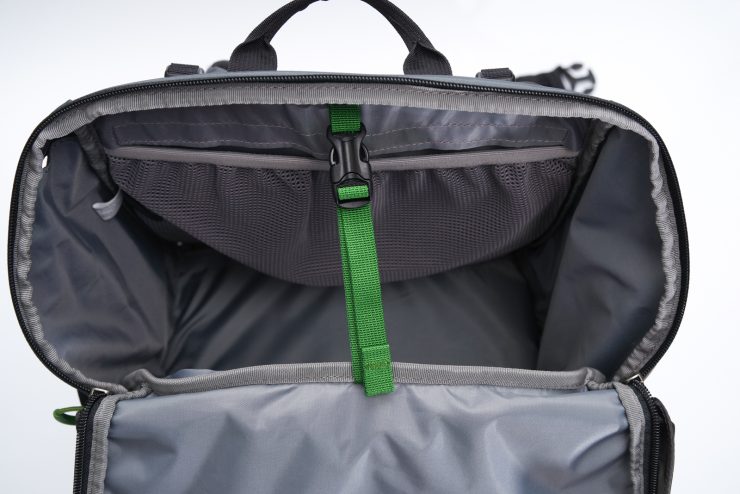
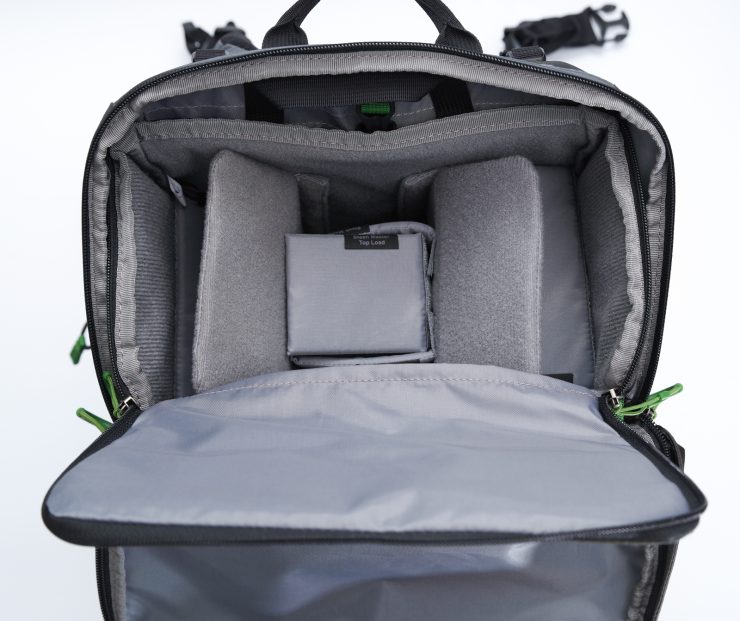
The top includes a slim pocket, and access to the main compartment, which is a wide, boxy compartment. A mesh sleeve at the back provides a minimum of organization, and a thin band near the top can help to keep larger items in place and compress somewhat.
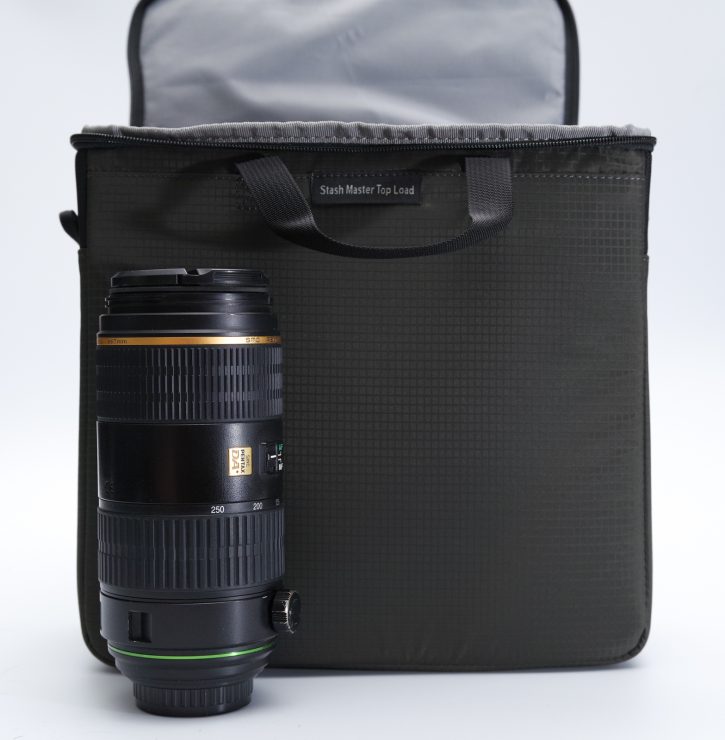
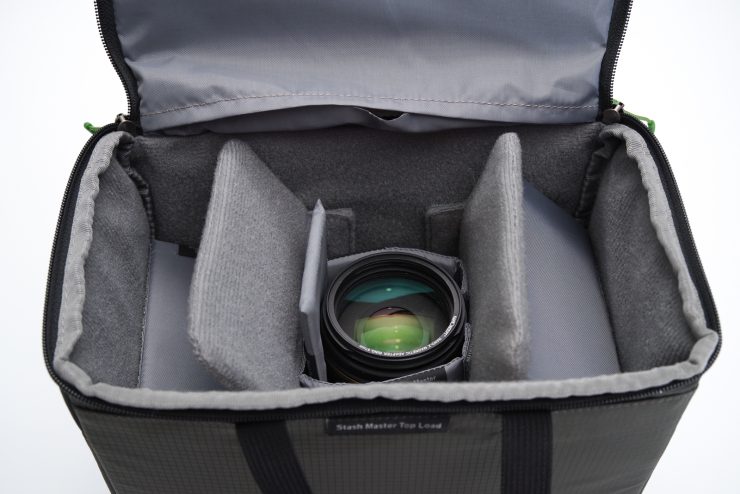
To compliment the pack, Mindshift Gear recommends an optional insert called the Stash Master Top Load. This insert fills the whole volume and turns the backpack into a huge, dedicated case for photo gear. The insert can accept longer lenses and can be configured in many ways thanks to the large number of inserts. It can also be divided partially for lenses, and partially for clothes or other items, to strike a balance between photo gear and the rest.
One side includes a compressible and deep pocket for a large water bottle or a tripod (which can be stabilized by a strap at the top).
The other side gives access to the camera compartment. A panel is held in place with a magnet and lifts up when released, allowing the bottom compartment to rotate.
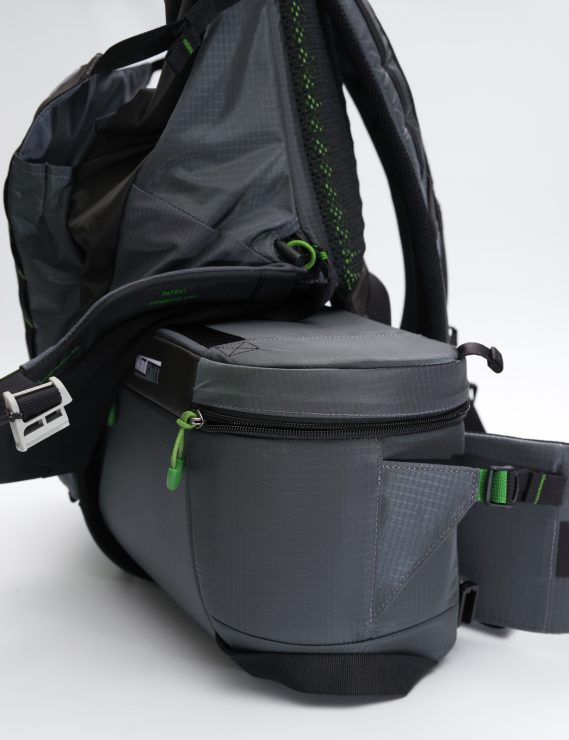
To do this, the user simply pulls either on the hip strap or the handle on the compartment, releasing it.
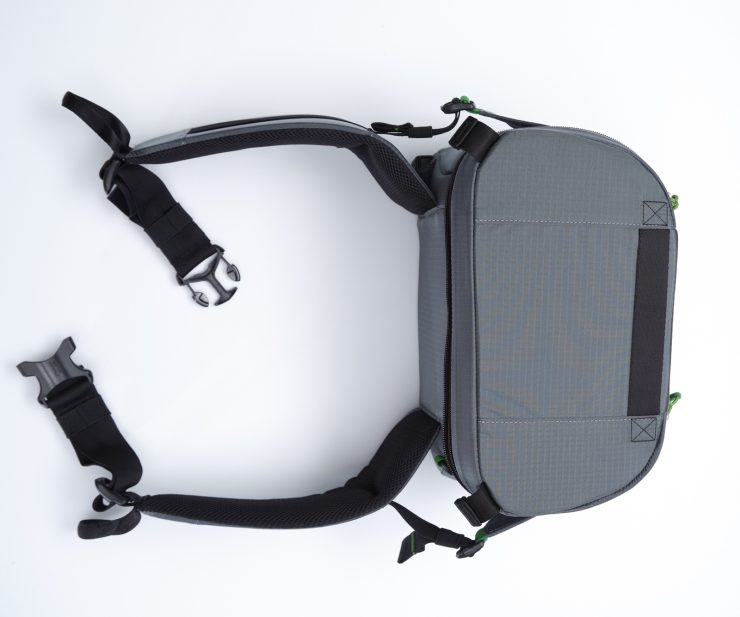
This compartment is functions as a stand-alone pack and could be used without the backpack, if desired. The top flap, quite stiff, closes with zippers but is also held in place via magnets. The inside of the flap sports a mesh sleeve. The compartment itself is where the camera and lenses are stored, and also includes a small tablet sleeve.
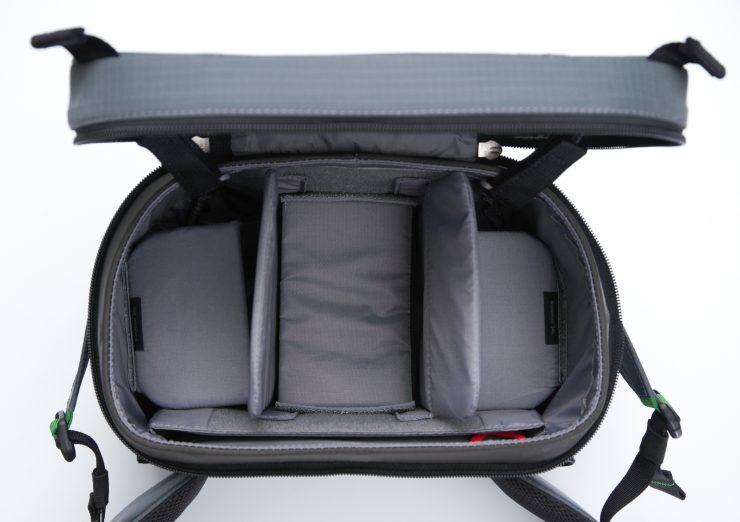
The large number of dividers makes organization easy. The designers apparently intend the users to store equipment on two layers, and the dividers and attachment points are aligned with this. My personal preference is to store equipment side-by-side, so I fiddled with the proposed organization but easily found a solution which works for me.
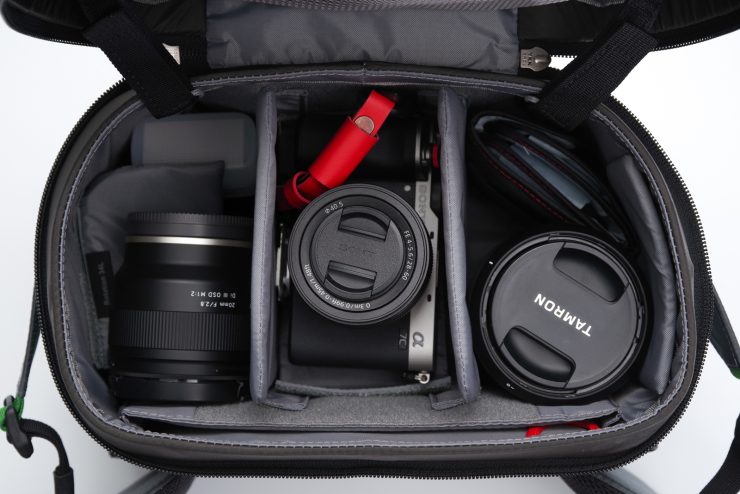
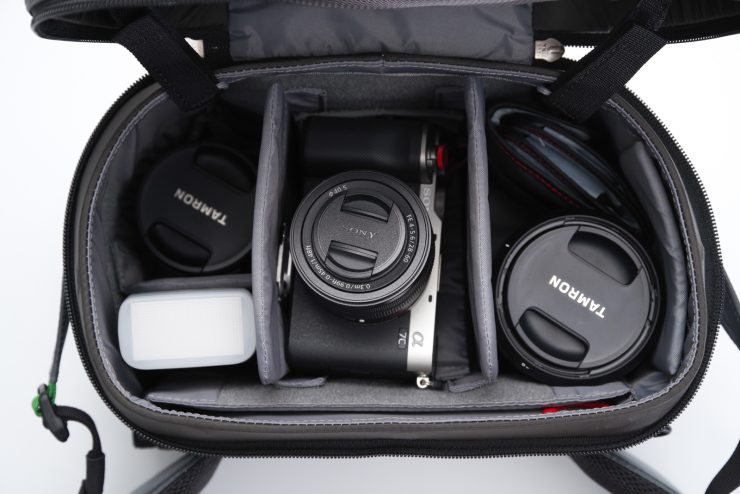
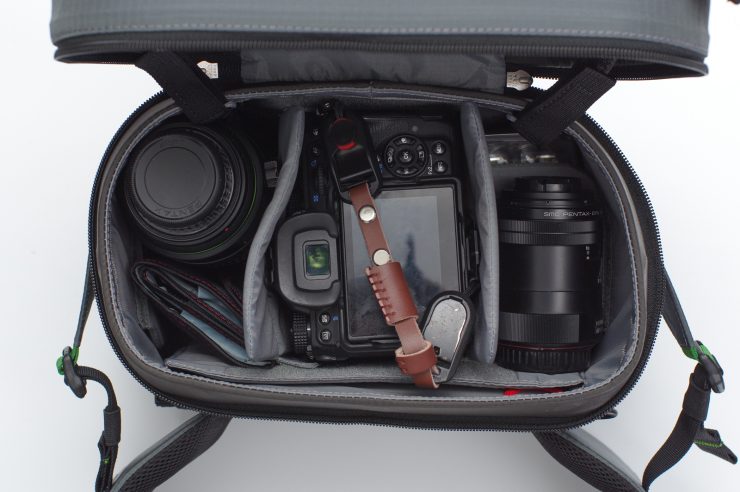
The compartment is a big improvement over the previous version of the backpack: it is deeper and a bit wider, making it easier to store a full frame DSLR, a long lens, a flash standing up, or other accessories. This size strikes an ideal balance and is perfectly tuned for the hiking photographer’s needs.
The materials are weather resistant. Mindshift Gear also offers an optional rain cover which comes in two parts, one for the backpack and one for the camera compartment. It is a bit sad that it is not included with the backpack but it is rarely required in use.
The bottom of the bag lacks the straps sometimes found on hiking bags, used to attach a sleeping bag or mat.
User Report
Having used many, many camera backpacks over the years, I can testify that no other bag makes it as easy to access your gear, and few bags are as comfortable to wear as the Rotation 180.
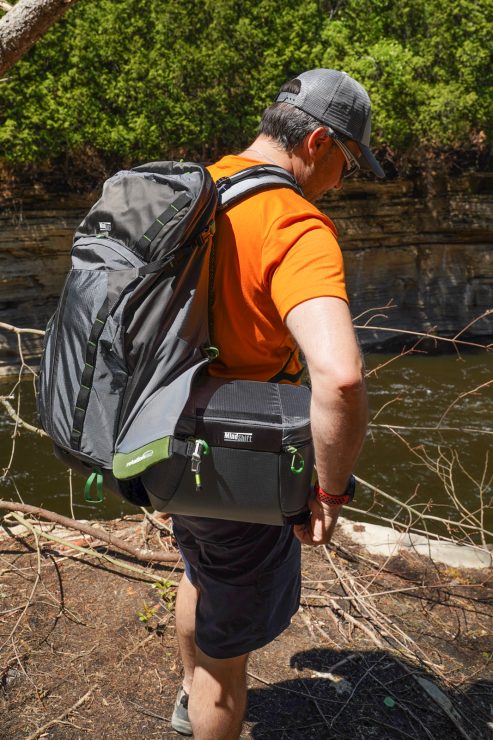
The Rotation180 backpacks are, at their core, true hiking backpacks. The back panel, shoulder and hip straps, choice of materials and included features all correspond to what one seeks when shopping for a hiking backpack (with or without camera compartments). The presence of load lifters, a solid chest harness, adjustable back length and many other elements improve comfort in a way that many camera bags don’t.
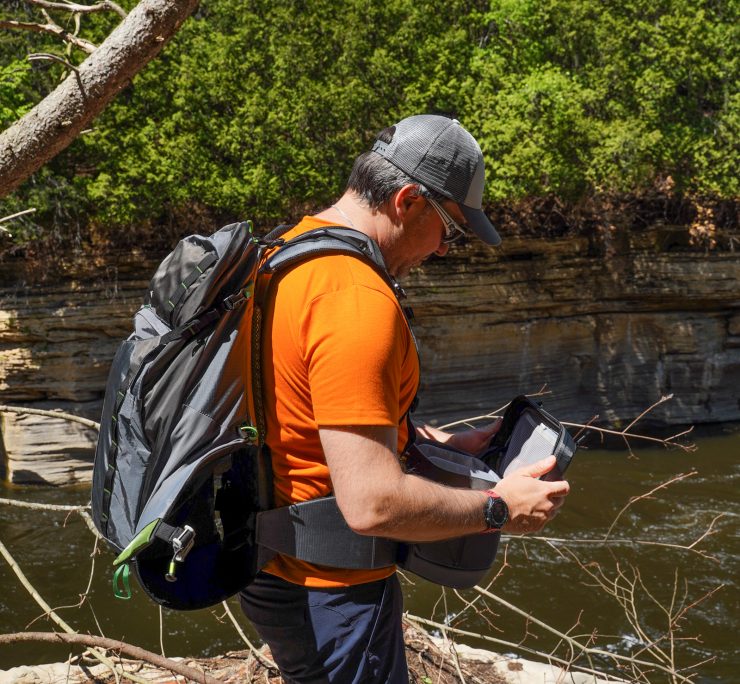
In particular, the hip strap is superb. Wide, thickly padded, it is extremely comfortable. This strap is only attached to the camera compartment, but still manages to bear most of the weight as on a more traditional bag. Rotating the bottom section doesn’t lead to scrunched clothes or any discomfort caused by bad load distribution. The backpack remains perfectly in place, stable and comfortable regardless of the position of the bottom compartment.
I’ve been using the first version of this backpack for many years and even though it has been my favorite hiking backpack during that time, there have been few issues with it. The good news is that Mindshift Gear solved almost all of them.
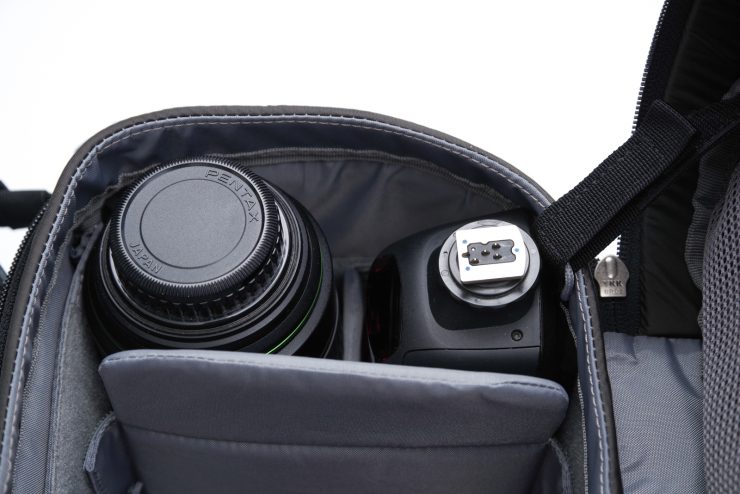
The position of the water bladder, at the front instead of the side, improves balance significantly, especially if you carry a compact tripod to the side also. The bottom compartment is larger than before, mainly taller, so longer lenses are easier to insert. It is also easier to configure the insides, with more Velcro strips and small dividers. The lid of the camera compartment now has magnets to keep it closed. So far, I have never used the zipper, only the magnets.
The Rotation180 backpacks are designed as hiking backpacks but they can serve in many other situations. The version 1 backpack has served me well, for instance, for a week at Disney World!
The only true drawback of the Rotation180 system is that, while it makes it easier to reach equipment when wearing the bag, it makes it more complicated when not wearing it. Nothing dramatic, but a small annoyance.
Value
At $299.99, the Rotation180 34L backpack isn’t cheap. However, this price brings it in the same range as other hiking backpacks. For instance, the F-stop Mountain Series Lotus 32L with camera cube costs $349, while the Compagnon Element reaches $379. The Shimoda Explore 40 with camera cubes costs $379.85. There are cheaper backpacks on the market, but when comparing with true camera hiking backpacks, the Rotation180 is priced in the lower bracket.
Conclusion
I have always regarded the Rotation180 backpacks as underdogs, less known than many other bags. That’s a shame, because no bag makes it as convenient to carry and use photo equipment when hiking.
The changes from version 1 to version 2 can appear minimal on the surface, but they improve the product in all the right ways, enough so that users of version 1 should consider the upgrade (if those changes corresponds to their own annoyances).
The Rotation180 34L offers an ideal size for one-day outings. Two days would probably be stretching it a bit. The larger 50L version appears well-suited for multi-days adventures, while the 22L is well suited for those who want to travel light (but lacks a provision for the water bladder).
The 34L I tested is an excellent hiking backpack. The easy access to the photo compartment makes it even better and is truly a game-changer. It solves a problem many did not know they had, and will be particularly beneficial when hiking with non-photographers, families or kids.
The Rotation180 backpack is, by far, my favorite backpack when hiking. Quite simply, it makes my life easier.

